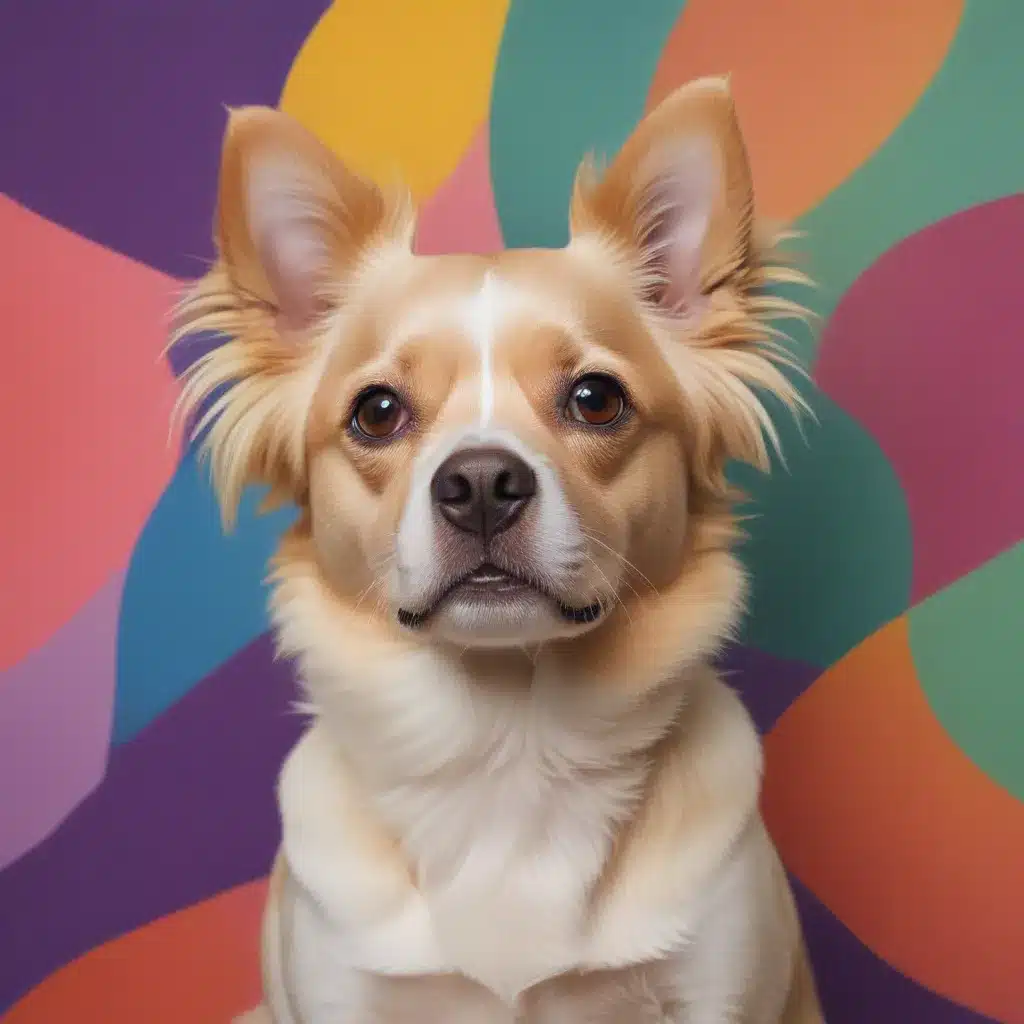
As an experienced art writer and creative consultant, I’ve seen how the strategic use of colour can elevate any artistic medium—especially when it comes to the captivating art of pet portraiture. Crafting harmonious colour palettes that both honour the natural beauty of our furry, feathered, and scaly companions and inject a touch of creative flair is a true mark of a skilled artist.
The Power of Colour Theory
At the heart of chromatic harmony lies colour theory—the foundational principles that govern how colours interact and complement each other. The classic colour wheel is a visual representation of these relationships, dividing hues into primary, secondary, and tertiary colours.
Complementary colours, those opposite each other on the wheel, create a vibrant contrast that instantly draws the eye. This high-contrast pairing is perfect for adding drama and visual interest to pet portraits, whether it’s the striking combination of a cat’s golden eyes against a deep blue background or the vivid clash of a parrot’s scarlet feathers and lush green foliage.
On the other hand, monochromatic and analogous colour schemes—using variations of a single hue or adjacent colours on the wheel—foster a sense of harmony and cohesion. These soothing palettes can beautifully showcase the natural beauty and texture of an animal’s coat or scales, allowing the viewer to get lost in the intricate details.
Understanding colour psychology is also crucial when crafting captivating pet portraits. Certain hues evoke specific emotions and associations. Blues, for example, are often perceived as calming and trustworthy, making them an excellent choice for portraying the gentle nature of a loyal canine companion. Vibrant reds and oranges, on the other hand, can convey energy, courage, and a touch of playfulness—perfect for a mischievous feline or exuberant parrot.
Painting Techniques that Bring Colour to Life
Translating this chromatic expertise into breathtaking pet portraits requires a mastery of various painting techniques. Acrylic painting, with its vibrant, fast-drying pigments, allows artists to build up layers of colour and texture, capturing the nuanced sheen of a dog’s silky fur or the iridescent shimmer of a bird’s plumage.
Oil painting, with its rich, buttery consistency and blendable properties, lends itself beautifully to the creation of soft, lifelike fur and feathers, while also enabling bold, expressive brushstrokes that bring personality to the piece.
For a more ethereal, dreamlike quality, watercolour painting excels at capturing the delicate, translucent nature of an animal’s features, with its fluid washes and luminous transparent layers.
By combining these diverse painting methods, artists can achieve a wide range of chromatic effects, from the bold, graphic elegance of a cat’s silhouette to the nuanced, almost photographic realism of a dog’s gaze.
Capturing the Essence of Your Subject
Beyond the technical mastery of colour and paint, the true artistry of pet portraiture lies in the ability to capture the unique personality and essence of each subject. This often begins with a deep understanding of animal anatomy and the careful observation of behavioural nuances.
Meticulously studying the facial features and body proportions of the animal being portrayed allows artists to render their subjects with authenticity and accuracy, ensuring a genuine connection between the viewer and the artwork. Paying close attention to the subtle expressions, postures, and movements of the pet can also imbue the portrait with a palpable sense of life and character.
For those seeking to infuse their pet portraits with an extra touch of whimsy and emotion, incorporating anthropomorphic elements can be a delightful approach. By imagining their subjects engaging in human-like activities or expressions, artists can tap into the universal language of emotions, creating paintings that are both visually striking and emotionally resonant.
Practical Tutorials for Aspiring Artists
Ready to put your newfound chromatic expertise into practice? Here’s a step-by-step tutorial for creating a vibrant, personality-filled pet portrait using a mixed media approach:
-
Establish the Composition: Begin by sketching the basic outline of your pet subject, considering the overall placement and proportions. Experiment with different angles and perspectives to find the most captivating composition.
-
Select a Colour Palette: Decide on a harmonious colour scheme that complements your pet’s natural hues. You might opt for a bold, complementary pairing or a more subtle, monochromatic approach, depending on the mood you wish to convey.
-
Layer with Acrylics: Start by applying a base layer of acrylic paint, using broad, expressive brushstrokes to establish the overall colour and texture of your pet’s coat or scales. Allow this layer to dry completely.
-
Add Depth with Oils: Next, use oil paints to build up additional layers of colour and detail, blending and softening edges to create a lifelike, three-dimensional appearance. Pay special attention to the eyes, nose, and other focal points.
-
Incorporate Mixed Media: Enhance your painting with mixed media elements, such as coloured pencils, charcoal, or pastels, to add subtle details, highlights, and textural accents that bring your pet to life.
-
Finish with Finishing Touches: Complete your portrait by refining any final details, adding final highlights, and ensuring a cohesive, harmonious composition that captures the unique personality of your furry, feathered, or scaly subject.
By mastering the art of chromatic harmony and incorporating a variety of painting techniques, you’ll be well on your way to creating captivating, emotionally resonant pet portraits that captivate and delight. For more creative inspiration and practical guidance, be sure to check out the resources available at Pencil and Paint Muse.
Tip: Experiment with different media to discover your unique style